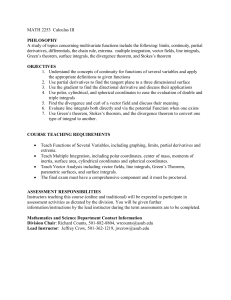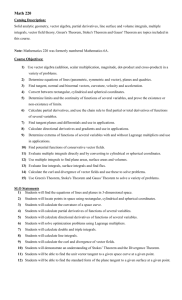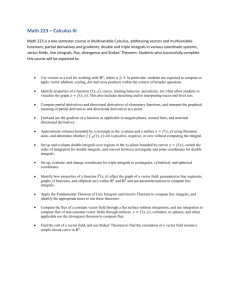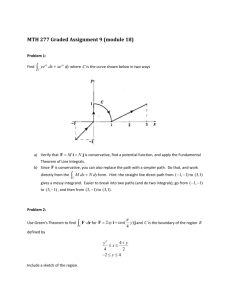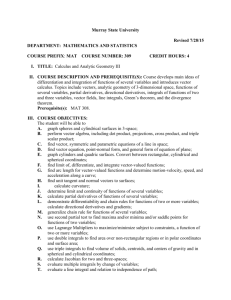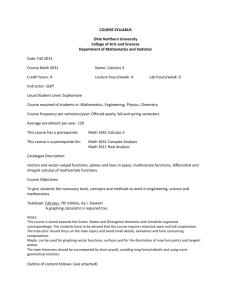Math 318 Abstract Algebra
advertisement
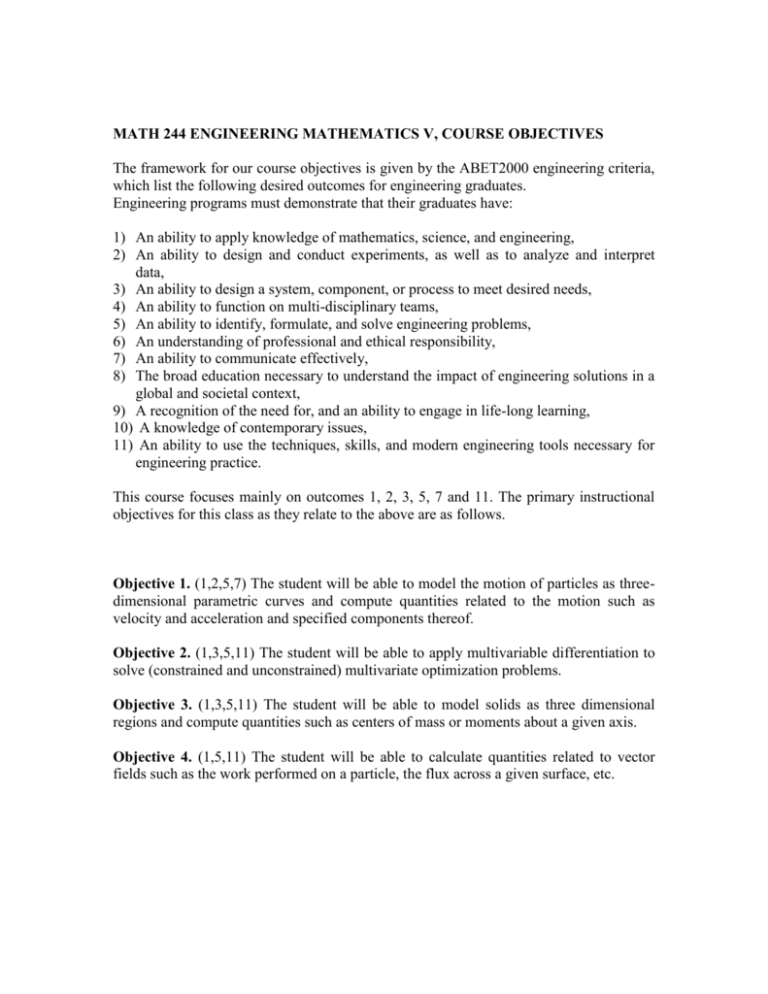
MATH 244 ENGINEERING MATHEMATICS V, COURSE OBJECTIVES The framework for our course objectives is given by the ABET2000 engineering criteria, which list the following desired outcomes for engineering graduates. Engineering programs must demonstrate that their graduates have: 1) An ability to apply knowledge of mathematics, science, and engineering, 2) An ability to design and conduct experiments, as well as to analyze and interpret data, 3) An ability to design a system, component, or process to meet desired needs, 4) An ability to function on multi-disciplinary teams, 5) An ability to identify, formulate, and solve engineering problems, 6) An understanding of professional and ethical responsibility, 7) An ability to communicate effectively, 8) The broad education necessary to understand the impact of engineering solutions in a global and societal context, 9) A recognition of the need for, and an ability to engage in life-long learning, 10) A knowledge of contemporary issues, 11) An ability to use the techniques, skills, and modern engineering tools necessary for engineering practice. This course focuses mainly on outcomes 1, 2, 3, 5, 7 and 11. The primary instructional objectives for this class as they relate to the above are as follows. Objective 1. (1,2,5,7) The student will be able to model the motion of particles as threedimensional parametric curves and compute quantities related to the motion such as velocity and acceleration and specified components thereof. Objective 2. (1,3,5,11) The student will be able to apply multivariable differentiation to solve (constrained and unconstrained) multivariate optimization problems. Objective 3. (1,3,5,11) The student will be able to model solids as three dimensional regions and compute quantities such as centers of mass or moments about a given axis. Objective 4. (1,5,11) The student will be able to calculate quantities related to vector fields such as the work performed on a particle, the flux across a given surface, etc. Detailed Objectives for MATH 244, Engineering Mathematics V The following are more detailed objectives for the course, lined up to correspond with the exam schedule. The primary objectives the detail relates to are in parentheses. By the end of the course the student will be able to Exam 1. 1. Model a given curve as a parametric function of one variable. (1,4) 2. Plot a three dimensional parametric curve in MathCAD or other computer algebra system. (1) 3. Calculate the length of a parametric curve (1) 4. Calculate the curvature of a parametric curve at a point. (1) 5. Calculate the velocity and the acceleration of a particle on a given path. (1,4) 6. Determine which part of the acceleration of a particle increases the particle’s kinetic energy. (1) 7. Calculate the limit of a parametric curve at a point. (1) 8. Calculate partial derivatives and gradients. (2) 9. Interpret surface and contour plots to estimate partial derivatives, paths of steepest ascent or descent, locations of extrema etc. (2) 10. Classify a function of several variables as continuous, differentiable or neither at a point. (2) Exam 2. 11. Apply the multivariate chain rule to calculate derivatives. (2) 12. Calculate and classify the critical points of a function of several variables. (2) 13. Model and solve unconstrained optimization problems. (2) 14. Model and solve constrained optimization problems using Lagrange multipliers. (2) 15. Model a given surface or region as a parametric surface. (1,4) 16. Plot a parametric surface in MathCAD or other computer algebra system. (4) 17. Calculate the area of a given parametric surface. (1,4) 18. Calculate triple integrals in rectangular, cylindrical and spherical coordinates. (3) 19. Determine which coordinate system to use when solving a multiple integral. (3) 20. Model solids (not necessarily with constant density) as regions in three-dimensional space. (3) 21. Calculate triple integrals. (3) Exam 3. 22. Improve two-dimensional models to three-dimensional models in selected applications. (2,3) 23. Calculate triple integrals by changing to cylindrical and spherical coordinates. (3) 24. Determine the right coordinate system to compute a triple integral. (3) 25. For a given solid calculate the center of mass and the first and second moments about a given axis. (3) 26. Calculate a double integral using the change-of-variable formula. (3) 27. Interpret a vector field plot to estimate the value of a line integral in a vector field from a sketch of the vector field and the path. (1,4) 28. Calculate line integrals of scalar functions and of vector fields. (1,4) 29. Determine if a given vector field is conservative. (4) 30. Calculate the potential function of a conservative vector field. (4) 31. Apply the fundamental theorem for line integrals to calculate line integrals of conservative vector fields. (1,4) 32. Apply Green’s theorem to compute line and surface integrals. (1,4) 33. Calculate the curl and the divergence of a vector field. (4) Final Exam. 34. Calculate the surface integral of scalar functions and of vector fields. (4) 35. Apply Stokes’ Theorem to calculate surface integrals. (4) 36. Apply Gauss’ Theorem (the Divergence Theorem) to calculate integrals over solids. (4) These topics can be found in Concepts: Sections 10.1-10.5, 11.3-11.8, 12.6-12.8, 12.9, and 13.1-13.8.

